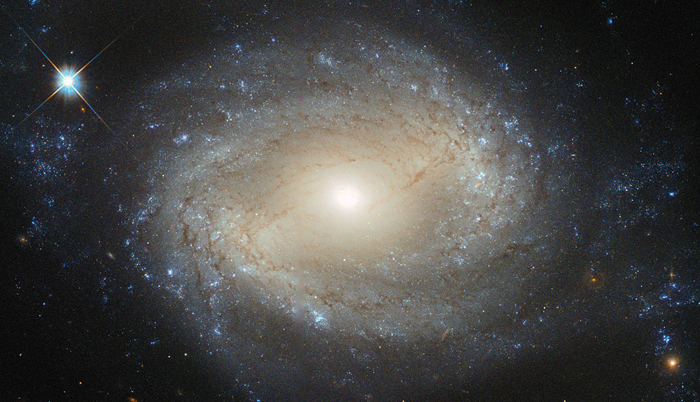![]() Home > Space & Science
Home > Space & Science
Supermassive black holes may control galaxy formation

ESA/Hubble & NASA
![]() December 22nd, 2017 | 09:46 AM |
December 22nd, 2017 | 09:46 AM | ![]() 2243 views
2243 views
WORLD
Scientists have suspected for awhile that the supermassive black holes at the center of most galaxies affect the formation of stars within that galaxy. Now, in a study published this week in The Astrophysical Journal, scientists may have found the mechanism for how that happens. A team led by Shelley Wright, a physics professor at the University of California San Diego, found that the winds generated by these energetic stellar objects blow throughout a galaxy and affect the way stars form.
Wright and her team studied a supermassive black hole contained within a quasar at the center of a galaxy called 3C 928, which is over 9 billion light years away. This supermassive black hole is a peek into our early universe, giving us an idea of what our galaxy might have looked like as it was forming.
When scientists look at the galaxies that are closest to us, they find that the mass of the galaxy is closely correlated with the mass of the supermassive black hole at its center. That wasn't the case for the much-younger galaxy being studied. The galaxy is much less massive than it should be, given the mass of the supermassive black hole and expected resulting correlation.
The implication here is that the mass of the supermassive black hole was in place long before the galaxy was formed. In fact, the energy from a quasar (a supermassive black hole surrounded by a luminous accretion disk of gas and dust) may actually control how the galaxy grows.
Understanding how our early universe formed and why it grew the way it did is invaluable when it comes to learning our place in it now, so this is a fascinating revelation about galaxy formation. This discovery is from a large set of data on distant quasars, so it will be interesting to see what other results emerge as scientists analyze it further.
Source:
courtesy of ENGADGET
by Swapna Krishna
If you have any stories or news that you would like to share with the global online community, please feel free to share it with us by contacting us directly at [email protected]